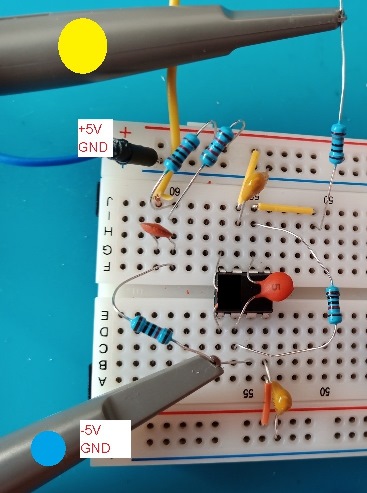I've been trying to tame an LM318 opamp in order to replace the LM741 in a circuit because I need to buffer a higher frequency sine wave than the LM741 likes (1Mhz).
The datasheet shows the following example circuit right on page 1:

Ok, so I build this up, and am feeding a 200kHz signal at 0.6V peak-to-peak offset to a small, positive value, with a +5 and -5V rail:


However, instead of buffering the voltage, the amplifier starts to self-oscillate:

Not what was supposed to happen, so I decided to solder the circuit to perfboard, but much to my disappointment with the same result.
I thought maybe adding a resistor before the oscilloscope at the output would help so as to not drive a largely capacitive load, but that made no measurable difference
After lots of research I came across a post that recommended decoupling pin 1 and 8 of the opamp with a tiny capacitor (I used 5pf, but tried other values, larger didn't have a visible effect), and it seemed to tame the beast a bit, but the output was still distorted. Note that this is not mentioned anywhere in the datasheet. however, in the internal diagram on page 15 there seems to be C3 (28pF) connected across pins 1 & 8 internally, so not sure why a tiny 5pF would make a difference here.
This sure isn't by design, so my question is basically, what am I doing wrong in using this device and how can I fix this?
Is it not suitable for this purpose and I should consider a different chip?

